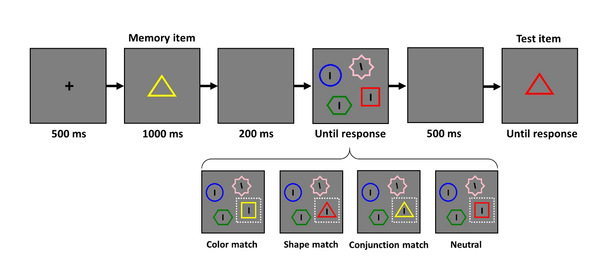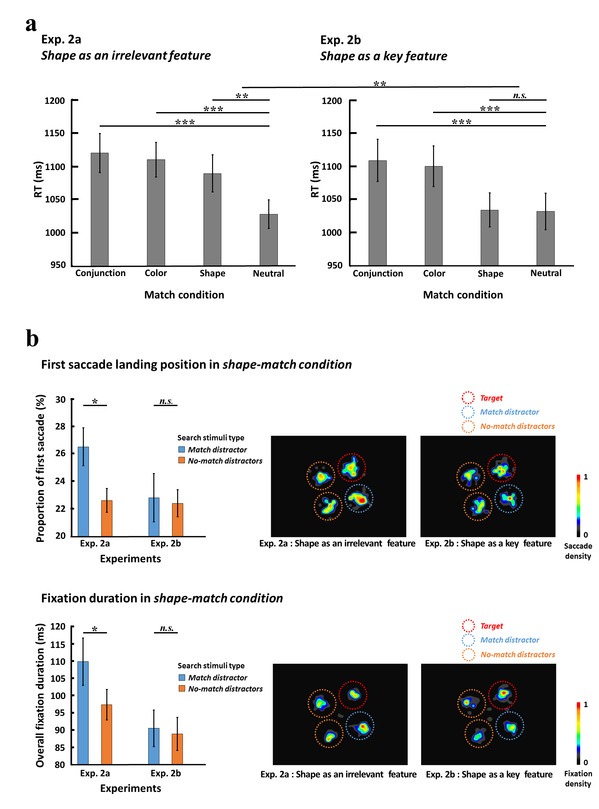When logging onto a web page, we are often required to enter a randomly generated verification code. To avoid errors, we need to pay sufficient attention to it. However, this code is no longer needed for future scenarios; thus, the information becomes outdated after serving its one-time purpose. How does the brain deal with this type of attended but outdated information?
Recently, the research team led by Prof. CHEN Hui at the Zhejiang University Department of Psychology and Behavioral Sciences published an open-access article entitled "More attention with less working memory: The active inhibition of attended but outdated information" in the journal Science Advances.
The study reveals that our brain tends to prevent attended but outdated information from entering working memory through active inhibition, a process that is subject to executive control resources. A novel interpretation is provided. First, the information selection for working memory is not exclusively determined by attention. As a contrast, there is a re-selection for attended information being encoded into working memory. Second, attention does not necessarily enhance working memory; instead, it could sometimes impede the selection of information into working memory.
Working memory processes information in real time, but its storage capacity is extremely limited. Therefore, it must possess an efficient mechanism to select the most relevant or important information from the external environment for storage and manipulation. Attention has long been regarded as a gateway to working memory, for it determines what information is selected into working memory. This view has been vigorously championed in a massive body of previous studies.
However, Prof. Chen and his team asserted that this type of attended but outdated information has largely been ignored in the previous research although it is relatively common in everyday life. . Take the previous example of the verification code. From the perspective of resource saving, this type of information should be blocked out from working memory. The researchers thus hypothesized that attended but outdated information has in essence mutated into highly-activated irrelevant information. To prevent it from entering working memory, our brain will actively inhibit and remove it.

Task procedure of experiments
To attest to this hypothesis, the researchers compared the memory traces between two types of information: key features, which refer to the information that participants have to attend to and use to perform a task but do not need to report eventually (i.e., attended but outdated information), and irrelevant features, which are defined as totally task-irrelevant information throughout the whole task that participants should ignore (which serve as a baseline). As is shown in the task procedure, in one experiment participants were asked to judge whether the memory item was a circle at first, only if it was not a circle should they memorize its color, where shape served as a key feature. Participants in the control group were asked to memorize the color of the memory item and just ignore the shape, where shape served as an irrelevant feature. The working memory-driven attentional bias effect and the irrelevant-distracting effect were adopted to probe the working memory traces of irrelevant and key features.

Results of experiments
Both behavioral and eye movement data revealed that when the shape served as a key feature that needed to be attended to, its working memory trace was significantly weaker than that of irrelevant features that needed to be completely ignored. When the shape served as an irrelevant feature, it could produce a significant working memory-driven attentional bias effect and attract more saccade landings and longer fixation durations than other no-match distractors in visual search, suggesting that irrelevant features were selected into working memory. However, when the shape served as a key feature, no working memory-driven attentional bias effect was observed. Moreover, there was no difference in eye movements between match and no-match distractors, indicating that key features were not selected into working memory. Since the key feature needed to be attended and used at the beginning of the task, its initial activation must be higher than that of the ignored irrelevant feature. Nonetheless, the memory trace of the key feature was weaker than that of the irrelevant feature, indicating that the key feature was actively inhibited after it became outdated.
Subsequent experiments demonstrated that the inhibition of strong features such as color took longer time to complete. In addition, the memory trace of the key feature was even strengthened when executive control was consumed by another task, indicating that actively inhibiting key features relied on the involvement of executive control resources.
In this study, the researchers discovered that only key features were inhibited, while irrelevant features were retained, suggesting that the brain selectively removes unwanted information. The researchers speculated that, since active inhibition requires executive control resources, only when useless information reaches a certain level of activation (e.g., key features) will our brain actively inhibit it, so as to prevent it from interfering with future tasks. In contrast, our brain won't consume additional resources to inhibit weakly-activated useless information (e.g., irrelevant features) that would not significantly interfere with the ongoing task. This reflects the remarkable adaptive trait of our brain in processing information.






